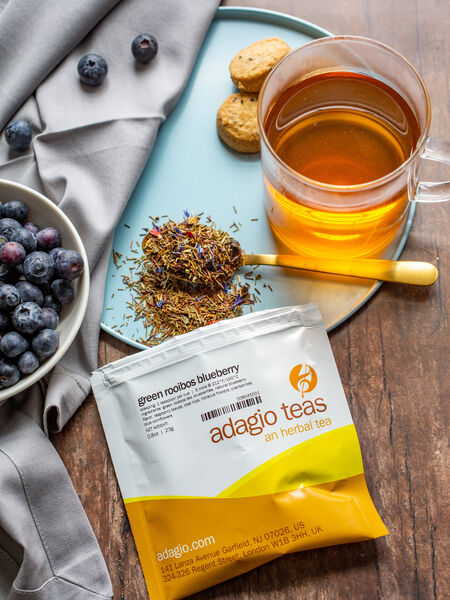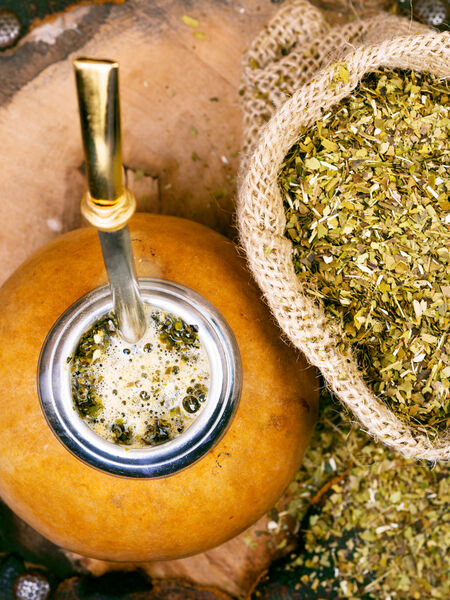Rooibos, Honeybush & Mate


Rooibos is made from the leaves of a bush belonging to the Papilionace family (named after their picturesque "butterfly" flowers). The bush is part of the legume family (e.g. peas, beans and peanuts) and grows to about four feet in height with an appearance very similar to sagebrush. Grown commercially in the Cedarberg region of South Africa's Western Cape since the 1700's, Rooibos' earthy, slightly sweet, and refreshing flavor is now enjoyed worldwide.
Rooibos is harvested in the summer. Green Rooibos is simply dried and packaged. The far more common and popular Red Rooibos that gives this tea it's name, is the oxidized version of the leaf. To make traditional Rooibos, the cuttings are moistened, rolled, and set out to oxidize. The resulting flavor can be described as earthy, woody, creamy, and sweet.
Contrary to the claims of many Rooibos producers and retailers, Rooibos actually contains LESS total antioxidant content than tea. That said, it contains different antioxidants, so the health benefits cannot be compared on volume alone. Additional research is required to properly compare and evaluate the health benefits of Rooibos.
We've also seen various sources claim that Rooibos is high in essential vitamins and minerals, and is effective in relieving skin ailments or improving complexion. Both of these claims lack scientific backing. Rooibos is high in antioxidants, but the only other nutrients that translate to the cup in any meaningful quantities are copper and fluoride. The skin-care claims are based on studies on the topical (external) application of Rooibos and not its consumption as a beverage.
Honeybush
Honeybush is another member of the legume family and has been consumed as a tisane for hundreds of years. Honeybush, named because its flowers smell like honey, is processed almost identically to Rooiboos. It offers a stronger flavor with pronounced notes of wood and honey. Honeybush is also naturally caffeine-free and antioxidant rich.
Yerba Mate
Yerba Mate is a very popular herb grown in South America and is a member of the holly family. It brews up strong with earthy flavors of straw and a touch of sweetness on the finish. Some vendors claim that Mate contains a special variant on caffeine called mateine. Put simply, there is no scientific basis for this claim; it's just regular caffeine. So, be warned that this "Herbal Tea" packs quite a stimulative punch!
Mate is much more than just a powerful stimulant. It also contains polyphenol (antioxidant) content comparable to tea and orange juice. The types of antioxidants in Mate are different from those in tea, but they do offer similar health benefits.
 teaclass
teaclass
